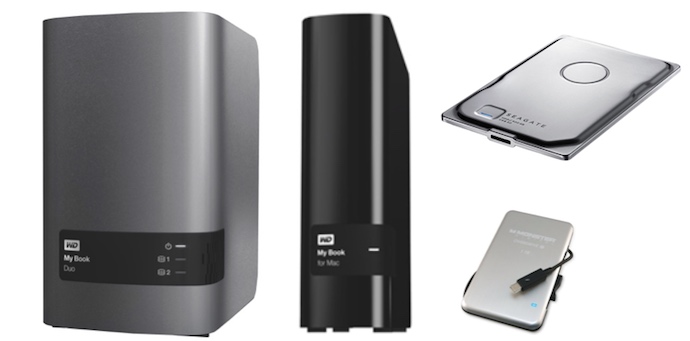
Setting up an office in a compact space used to be a lot more challenging than it is now. For one thing, there were a lot more wires and cables to deal with in those pre Wi-Fi days, but space was also a major issue. PCs were bigger, but so were the peripherals essential to a home office. Keyboards were massive, external hard drives were in enclosures that dwarf those of today and a laser printer practically needed a desk to itself. Thanks to advances in miniaturizing components, some of these devices are even available as portable units now. In this latest installation on the evolution of the PC from room-sized appliance to today’s mini computers, I explore shrinking PC peripherals.
Printers
In terms of sheer amount of space saved by a single peripheral, it’s tough to beat the advances in printer technology.
The first laser printer aimed at the consumer market was the LaserJet, released by HP in 1984. This black and white laser printer could manage 8 pages per minute of 300 dpi text. It weighed 35 kg and cost $3,495. A quick scan of the printer department at Best Buy shows a monochrome HP laser printer selling for well under $200. It prints 19 pages per minute at 600 dpi, has no wired connections to worry about (thanks to Wi-Fi) and tips the scales at just over 5 kg.
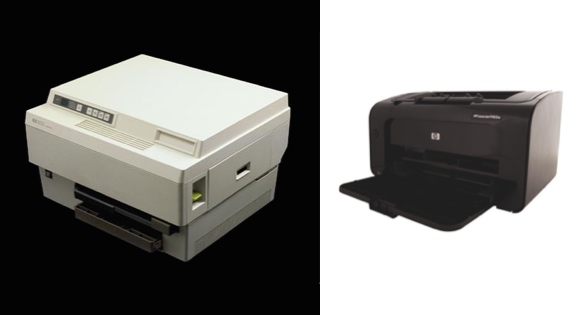
It’s not just the physical size of printers that’s shrunk, the price tag has too!
Printers also represent a big win for combining devices. A multifunction printer combines printing, scanning, fax (yes, some people still need a fax machine) and photocopying in a single unit. That’s a huge space savings for a well-equipped home office.
For an even better idea of just how much technology has advanced when it comes to miniaturizing a printer, look at a portable model like the Fuji Instax SHARE SP-1. It’s wireless and runs on batteries. At 10 x 4 x 12 cm and just 253 g, you can practically stuff it in a pocket. But give it 16 seconds and it will print off a full colour snapshot from your smartphone.
External Drives
External storage technology has advanced significantly since the days of the first PCs. When it comes to traditional hard drives, the spinning platters used to store data have been getting smaller and the density of data storage has increased. The net result of this has been the ability to shrink external hard drives—a must have peripheral for home and small office data backup—from bulky devices the size of a dictionary, to something as sleek as the 500GB, 7 mm thick Seagate Seven.

The introduction of solid state drives (better known as SSDs) has kicked off a new revolution in shrinking storage. SSDs have no moving parts, so they can take small physical size to new extremes. External SSDs are still relatively uncommon, since they tend to be more expensive than traditional hard drives, but here’s an idea of what to expect. Monster Digital’s Overdrive 3.0 external SSD with 1TB of storage measures 6.0 x 12.6 x 0.8 cm and weighs just 104 g. In comparison, the 1TB external hard drive currently hooked up to my PC measures 17.6 x 20.2 x 41.1 cm and weighs 1.36 kg.
When external SSDs go mainstream, people like me are going to save a lot of space—not to mention gaining a lot of speed—as our external hard drives are slowly retired.
The Keyboard and Mouse
You wouldn’t think that there would be much room for shrinking a keyboard or mouse, but those peripherals have also seen significant size reductions since they first appeared on the scene, freeing up considerable desk space.
Manufacturers have replaced the rolling ball from the mouse with optical tracking, shrunk it to fit more comfortably in a hand, replaced the bulky and annoying cord with a wireless connection and battery operation, and even gone so far as to add touch input to the upper surface (effectively enabling the mouse to do double duty as a trackpad). The result of these high tech advances can be seen in the super slim, Logitech Ultrathin Touch Mouse.
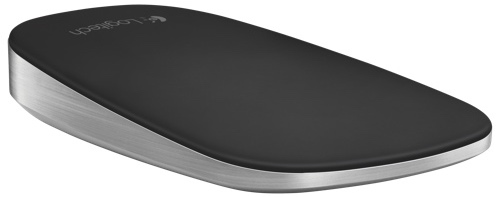
Keyboards have also evolved into much smaller and slimmer devices. Manufacturers soon figured out that rubber and plastic hinges could replace the mechanical switches used in early PC keyboards. From there they realized that most consumers didn’t really need the standalone numeric keypad, so that was loped off to create compact keyboards. Laptops popularized chiclet style keyboards that use membranes and less key travel to get thinner. Then wireless technology got rid of cords.
You can see the result from the photo below. A compact, wireless keyboard has a much smaller footprint than a traditional full-sized keyboard, doesn’t have the cable to get tangled up (or take up a port on the PC) and for most people it works just as well for typing.
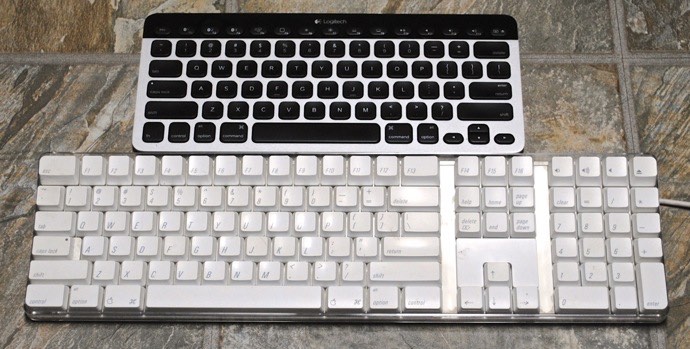
The physical Limits to Making Peripherals Smaller
There is virtually no limit to how small a mini PC could get. We don’t interact with PCs directly, we do so through peripherals like keyboards and mice. So the ultimate size of a PC is almost purely a matter of how small technology can make it.
Peripherals and accessories are a different story. Some are similar to the PC in that there’s nothing to really stop them from getting as small as technology allows. But others have built-in constraints.
The printer is a perfect example. Future technological advances will be tempered by the fact that most people print onto letter-sized (8.5 x 11-inch) paper. To remain of any use, laser and inkjet printers will need to remain large enough to keep a stack of letter-sized paper in their tray. Keyboards also have usability limits. Technically, you could use a keyboard the size of the virtual one on your smartphone and free up a ton of room on your desk—but would you want to? After a few minutes of typing, I’m pretty sure you’d desperately want to trade back to your compact keyboard with the full-sized keys…
To read more about the downsizing trend in PCs, read the other posts in the series, including: the shrinking laptop, How Microsoft will use Windows 10 to turn your smartphone into a handheld PC, the tech that’s made the mini PC possible, and why PC monitors are going the opposite direction andinstead getting larger.

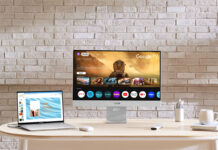

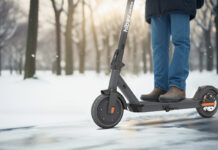
One trend that is going bigger…. screen sizes.
Absolutley —that actualy became piece of its own 😉
Comments are closed.